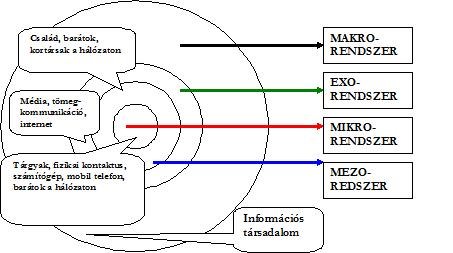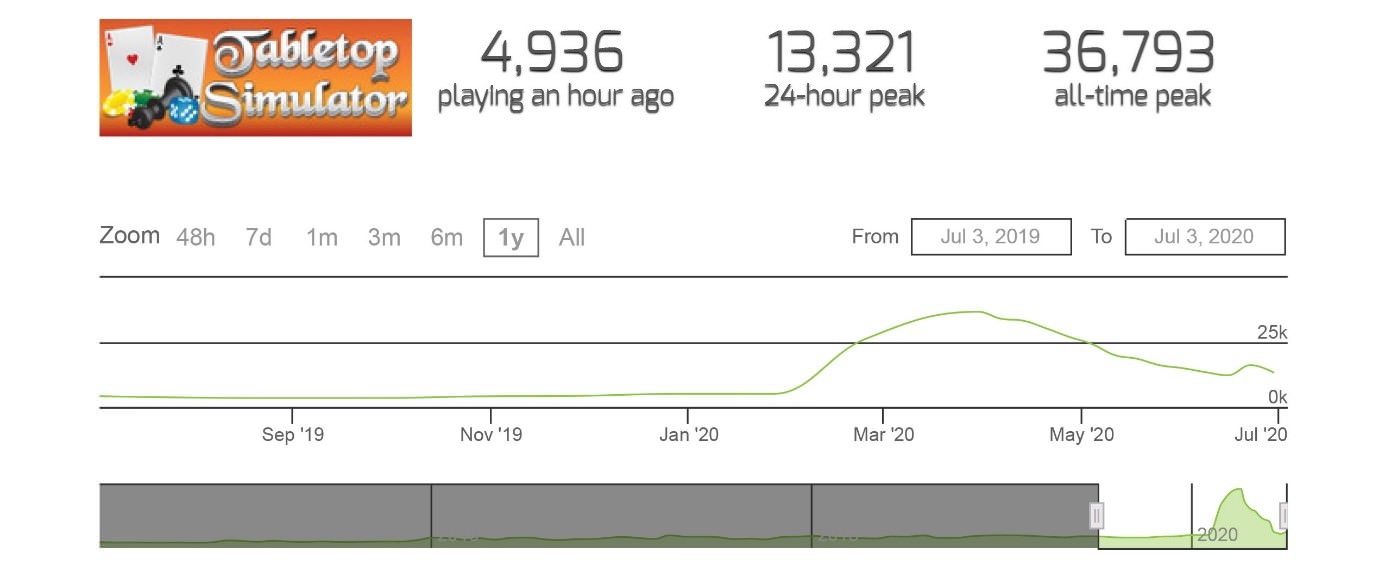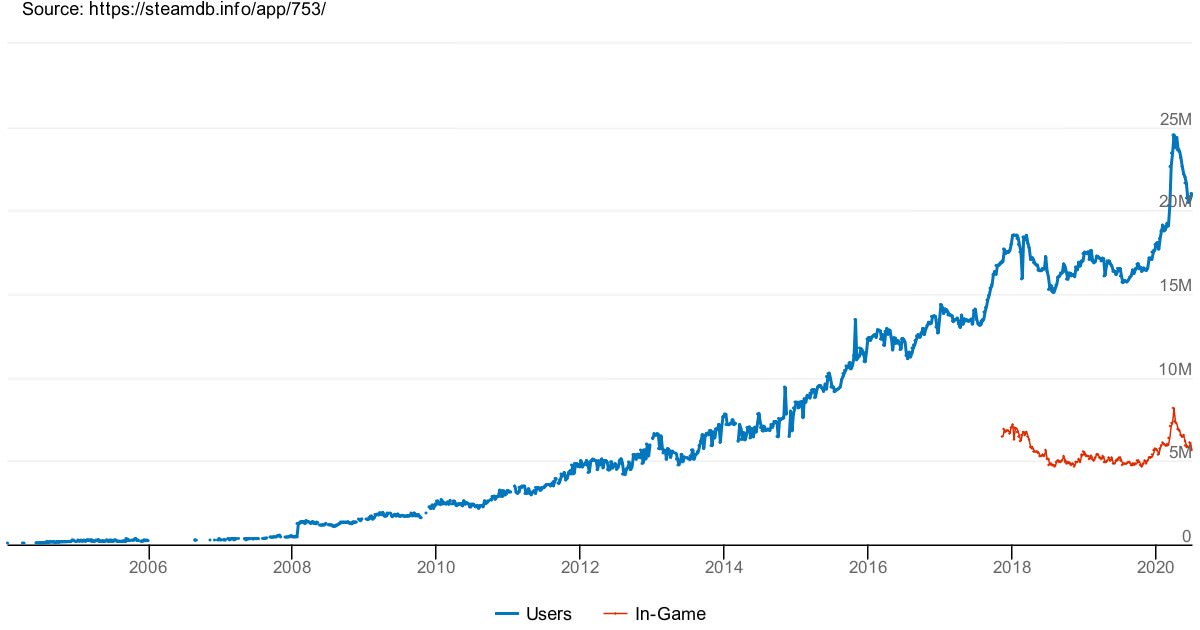Judit Herczegh – Dániel Halász: Online gaming communities and their platforms in the information society
Cikk letöltése: pdf2021-04-01

Abstract: The ICT devices are an integral part of socialisation. Family is the primary, and school is the secondary socialising platform, thus the information society can be considered the third socialising medium, which has a huge advantage primarily for today’s youth. While the school only conveys models and values during the years of study, the information society provides a lifelong shaping, similarly to the family (Herczegh 2014).
In the Social Network Sites: Definition, History, and Scholarship by Danah M. Boyd, Nicole B. Ellison (2007) three criteria are allocated in connection with social networks: it facilitates individuals to (1) create a public or semi-public specialized site in a limited system, (2) to connect those with the users, whom they are in contact with, and to (3) take a look and review their and other’s connections in the system (Boyd-Ellison 2007).
Social networks are the field of the communication and information flow as well as the community-building, which do not only serve educational functions in respect of socialization. The communities, gathered in online games, acquire concrete knowledge as well as social and behavioural rules in a direct way. On the other hand, the gamer communities, and the games themselves develop a specific flow of information, language, and social communication due to their multicultural melting pot effect. Furthermore, the video games have extensive fan bases, who are actively operating either focusing on a certain game or on other online platforms. In this study, we examine the community-building and shaping influences of video games. After that, we present the largest online platforms of digital communities and how they work within it.
The system of online communities
In the era of the information society, new devices have appeared that change the scene of the socialization process, expanding it into a virtual world that is parallel to the real world. New roles, new types of communication, new cultural patterns, and new forms of community learning emerge and wait to be acquired in the network society, in which the management, distribution, and possession of information is the number one organizing principle. Social life and social relationships of the individuals are duplicated and mapped in the world of the Internet and the computer. We can state that the current generation already partly identifies themselves in the virtual space.
Based on Bronfrenbrenner's ecological model, we created our own information society model, which is aligned with the four subsystems of the original model, since the information society can also be divided into meso, macro, micro and exo systems.
Figure 1: Information society model based on Bronfrenbrenner's ecological model
(Source: Herczegh 2014)

In our information society socialization model, the environmental factors can be represented on concentrically expanding levels. The narrowest grade microsystem means the immediate physical and social environment, where the psychological characteristics of the person and the competencies develop during direct contacts. The mesosystem surrounding the microsystem refers to the active scenes the individual is in constant contact with, especially in childhood and inyouth, for instance the school and education system, as well as the media and online games, the communities in the environment around him. The exosystem is linked around this, in which the individual does not appear at the level of physical contact, but it has a latent influence on her social development, just like the parental social background, the certain way of life, lifestyle, and communication schemes. And last but not least, a broad social force field surrounds the individual, which we denote as a macrosystem and which conveys the general values and norms to be acquired in the given social period (Bronfenbrenner 1979, Herczegh 2014).
The gaming communities operating on the network form an integral part of the micro system of the information society model. These online communities reflect the diversity of real social interactions both in terms of their content and their functions ranging from keeping close or the distant relationships, through the acquisition of information to the expression of opinions, learning and group identity. They are diverse, just like social interactions.
About video games
In recent decades, more and more new video games have been launched. The exponentially growing market, which is now the largest entertainment industry, is also a response to the growing video game consumer market. As the user base grows in both directions of the population pyramid, video games partially replace and assimilate their predecessors, the pre-digital games. By pre-digital games we mean classic games that do not require the appearance of digital content, such as exercise games (sports, dance) or board games. There are only a few board games today that are not available in a digital version. A good example of this is the game Tabeltop Simulator, which simulates board games. This game illustrates the characteristics of video games as a genre, namely that it absorbs all the previous periods of gaming history, incorporating all forms and variations that help improve its properties. TBy now it can be stated that: every pre-digital game and social activity has a video game form (Z. Karvalics 2018).
During the global isolation caused by the COVID-19 pandemic, the third socialization environment, that is the information society, has become the primary socialization tool for many. The above-mentioned Tabletop Simulator achieved its highest ever user activity during the quarantine and its sales also sky-rocketed. Millions of isolated family members, friends and lonely, bored people turn to online games every day.
Figure 2: Trends of the number of users of the Tabeltop game during the quarantine
(Source: https://steamcharts.com/app/286160 2020)

There are single-player, multiplayer and massively multiplayer games or MMO. They can be played on personal computers, consoles, various handheld devices and mobile phones, and even on various smart devices, such as watches, cars and even refrigerators. You can choose from five-second mini-games, ten-minute occasional games, eight-hour action games, or endless simulated role-playing games that run twenty-four hours a day, every day of the year. We can choose games that have a strong narrative and interesting story, but also ones that have nothing of the kind and does not want to tell or teach anything, or we can play video games that measure performance. Although the game is digital, it can test the player not only mentally, but also physically and the two can be mixed optionally. For instance in the case of various dance games where, with the help of a motion sensor, the program compares the pattern seen on the screen and the player's movement and marks the performance. Despite this diversity, the video game is immediately recognizable and the users always knows that they are playing, because it is obvious, just like in the case of pre-digital games. Whatever type of digital game we are talking about, it brings its own player community to life and organizes it, which can operate in real space as well as invirtual space (McGoingal 2011).
The infinitely complex and advanced feedback system of video games offer unlimited number of possibilities for hidden and direct culture transmitting. This genre is mixed with other arts ranging from music or acting to fiction, which are used to create an immersive atmosphere or even as the main theme. The attributes discussed above brought the concept of gamification to life. Regarding video games and online games, gamification is meant to denote the trend that aims to introduce and operate games and game mechanisms with the purpose of creating values in the institutional systems that determine social processes (Fromann 2017).
Introducing the online game and the communities and social platforms built around it
The great advantage of online gaming communities is that by overcoming physical barriers they identify themselves primarily in the virtual space, so they are more numerous and diverse than their real counterparts. In this study, we take the strategy game Civilization VI as a sample. The game is a proper choice due to its thirty-year history, the wide and colorful user base, cultural mediating as well as its educational and sensitizing impact. According to our hypothesis, the values transmitted by the game are directly mapped in the online communities organized around it. It is difficult to estimate the size of the community of an online game, because there are numerous communities on several online platforms, on many of them it is not mandatory to for the group members to own the game, it is enough if they like it and show interest in it. Statistically, it is problematic that one user can be a member of several groups, so there are overlaps. Estimated sales numbers, on the other hand, can serve as good indicators. Based on the sales figure of the online video game store Steam, we can estimate this number at 2-5 million users and this can be a good starting point. They managed to sell 2 million copies within half a year of the release of the game, thus winning the title of the fastest-selling Civilization game, and since 2016 it has further increased the base of its players with its various console releases. Looking at the wider community, i.e. those who bought any part of the series, we can talk about approximately 40 million users.
The first platform examined is the Steam digital game store, which is the integrated game distribution platform and social site of the game development and publishing company Valve. Steam allows users to purchase and store games made by various providers. Games purchased on the Steam platform can be launched by the user through the game library of their own Steam account. The Steam application continuously measures user activities, which can be used to evaluate the popularity of Steam and the gaming industry. The platform reached its new record during the quarantine, 24.5 million users were online at the same time worldwide.
Figure 3: Steam online users from 2014 to the present
(Source: Steamdb.info 2020.07.03)

Steam gives its users the opportunity to write reviews about the games they own. It is noteworthy that the players actively use this opportunity. When the players briefly describe ther experience, they have to choose whether recommend the game to be purchased, based on which Steam calculates to what extent the community is satisfied with the product. In the reviews, Steam automatically indicates how many hours the user has played the game in total and how many at the time of writing. The community can also reflect on these reviews/criticisms, because the following question appears written below each post: Did you find this review useful? In addition, the products come with the players' user tagsThis social tagging system allows players to voluntarily tag a game based on its main characteristicsTags help you create an image of the game and search for other similar products. This is very useful as the potential customers can make a decision based on the opinions and evaluations of the real community, not professional critics, and they can also see how many hours the reviewer has played with the product, which also helps them when they are considering the value for money (Ahn-Kang-Park 2017 ).
Based on 84,848 user reviews, the studied game was rated Very Positive by its community, which in our case means that 81% of the reviews are positive and the users would recommend the game to others. The following popular community tags are associated with the game: Strategy, Turn-Based Strategy, Historical, Multiplayer, Singleplayer, Turn-Based, Grand-Scale Strategy, 4X, War, Simulation, Tactical, City Builder, Great Soundtrack, Modifiable, Online Co-Op, Co-op, Building, Manager, Hexagonal, Cozy.
Figure 4: Civ VI. number of users on average per month, in thousands
(Source: Statista.com 2020)

Examining the user activity of the game, it is recognizable that we could find at least 25-35 thousand online players in any minute of the last 4 years. The initial high value shows the launch of the game, and the two middle peaks show the release of the game accessoriesThe last sudden rise may indicate the effect of the quarantine lockdown due to the coronavirus.
In view of these we can conclude that the first, largest community of the game is made up of the players who bought and use it on Steam. Steam also functions as a community site, so users have the opportunity to tag each other, chat and send invitations to games, it also indicates the current status of users. This status can be online, available, busy, away from the machine (afk) or it indicates what game the person is currently playing. The user's friends have the opportunity to join a common game. Steam can also be considered as a kind of gamer social media platform. Each game has several different dedicated pages. Let's take Civ VI. Community Center page for instance. This page distinguishes the following sub-sections: Themes, Screenshots, Creations, Broadcasts, Videos, Workshop, News, Guides, Reviews. All the content related to the game is listed in bulk on the main page. Most of the time, these contents are the creations of community members, videos, drawings or tutorials for the game by the supporters. You can comment and upvote or downvote the shares. The report option allows the community to filter harmful contentsThis community is huge, but there is no real membership, you do not even have to own the game to do any activity in the community center. You only need to create a free Steam account. Considering all this, we can observe an active and productive group. Mainly interesting and humorous historical, ethnographic, sociological and political posts and works appear on the site, but unofficial game accessories, the so-called mods created by the community are also important elements.
The official Facebook page of the game forms the second largest community with nearly 740,000 followers. We cannot talk about a self-organized community here either, the site mainly contains informative official posts, of course dialogues can be formed here, too. Anyone can join freely, they do not have a specific policy. Social activity is not too lively, users mainly visit the site for official news.
The third largest and at the same time the first real self-organized community is Sid Meier's Civilization forum of Reddit, i.e. r/civ. With its 330 million average monthly users, Reddit has been the largest forum community on the Internet since its launch in 2005. On the site, you can find so-called subreddits and subforums on countless topics ranging from healthy eating, photography to avoiding mental illnesses and the subforum of the game as well. In 2019, the site exceeded 1.5 billion annual visitors, so it is no wonder that we can find the largest self-organized communities here. Anyone can share content on the forums, which can be upvoted or downvoted by the community. The content with the highest votes are promoted to the home page, which reaches more members, creating a kind of snowball effect. Submitters of the contents receive so-called charm points based on the evaluation of the community. A positive vote by another user gives +1 charm, a downvote results in -1 charm. The more downvotes, the lower the shared content falls in the ranking, where fewer and fewer people will see it. This charm number appears next to the user's name and indicates to members of the Reddit community that the user is an active and respected member of the community. The higher the charm, the more likely the sender is not a spam or scam bot. In addition to this point system, Reddit also has a second layer of the charm system. All submissions have a comment feature where users can provide comments or feedback. The community can also vote up or down on these feedbacks. Upvotes and downvotes count towards the user's comment charm, which can be seen by clicking on their username and checking their summary page. Until the user's comment charm reaches a certain threshold, they are limited for a period of time between two comments. This limit prevents spammers and the system cannot be clogged with too many messages. Once the users have proved that they can contribute to the life of the community, the restriction is lifted and they no longer have to wait to send comments. The comment charm also serves as a filter during conversations. If quie a lot of users downvote a comment, it will become hidden. This feature allows the community to filter harmful contents, but it is often misused when trying to censor views that do not agree with their own, especially during heated political or philosophical debates (Bergstrom 2011).
r/civ has 377,000 members. There are no requirements when joining, but the group strictly controls the content that appears in it. Since Reddit is a forum site, its main mission is specifically to create dialogues and communication. Here, the user can ask for the opinion and help of community with anything. The members mainly share experiences related to the game, so humor is not in the spotlight. Compared to the size of the community, there is surprisingly little, almost no non-game content sharing related to the game. This can probably be explained by the specific culture of Reddit, which is extremely strict. The community completely rejects the self-promoting, boasting, and profit-making posts.
The r/civ community has its own sub-community on its Discord server with an average of 2,500 members online every minute of the day. The Discord application is quite similar to Skype. Its purpose is to unite player communities. Its main function is to provide a chat interface and microphone communication. Discord /r/civ is probably the most active among the studied communities. It is extremely well structured, with separate chat channels for many conversation topics. Here it is already possible to share your own creations, which is actively done. In addition to chat channels, the Looking For Group channels are worth highlighting, where users can search for partners for online games. Most online games are organized here, so people who cannot do so in their immediate circle of friends have the opportunity to play with other people in a community. It is characterized by complex regulations and a hierarchical membership system. The importance of the server is also shown by the fact that the official developers of the game are also present in the life of the community, thus connecting fans with the creators.
As the fourth largest community built around the game, we study the aggregate of the three largest self-organized fan pages on Facebook, as their habits, demographic traits and main profile are almost identical. We analysed the following fansites: Civilization Community: 16711 members, Civilization 6: 9150 members, and Sid Meier's Civilization VI: 5257 members. The only essential difference between the three groups (besides their size) is that two of the three are dedicated exclusively to Civ VI, while one is dedicated to the entire series that has been running for 30 years. Consequently Civ VI fans can be found in all the three groups. The members of the groups are often members of the other groups as well, which is why content is recurrent and appears in several groups. In addition to the usual conversations about mutual help and gaming or history related posts, tourism related posts are also common. Many people ask here for suggestions on what is worth visiting in the country where they are going on vacation. There are many posts where they pose in front of a famous building in the game, for example the Parliament. These posts often reveal that they got to know the building because of the game or that the game aroused their interest in a culture. If someone wants to become a member, they will be asked a question about the game series in writing, the applicant must know the answer if he really likes the game. After all this, the applicant must obey the rules to keep his membership.
During our game-related research on Civilization VI. in 2020, we took questionnaires about cultural consumption habits in the online communities built around the game. Based on nearly 500 questionnaires filled out by the communities on Facebook, it can be stated that it is a multicultural community.
Figure 5: Number of applicants per nation
(Source: Authors 2020)
|
USA |
156 |
Brazil |
8 |
Bolgár |
4 |
Ausztria |
2 |
Tajvan |
2 |
|
UK |
37 |
Finn |
8 |
Cseh |
4 |
Chile |
2 |
Thaiföld |
2 |
|
Kanada |
27 |
Svéd |
8 |
Portugál |
4 |
Fülöp-szigetek |
2 |
Dél Afrikai |
1 |
|
Lengyel |
23 |
Francia |
7 |
Spanyol |
4 |
India |
2 |
Észt |
1 |
|
Magyar |
20 |
Mexikó |
7 |
Egyiptom |
3 |
Indonéz |
2 |
Grúz |
1 |
|
Norvég |
20 |
Román |
7 |
Horvát |
3 |
Izland |
2 |
Jordán |
1 |
|
Ausztrál |
14 |
Dán |
6 |
Ír |
3 |
Kína |
2 |
Kuba |
1 |
|
Holland |
12 |
Új Zéland |
6 |
Kolumbia |
3 |
Malajzia |
2 |
Lett |
1 |
|
Olasz |
11 |
Görög |
5 |
Török |
3 |
Szerbia |
2 |
Macedón |
1 |
|
Német |
9 |
Izrael |
5 |
Uruguay |
3 |
Szlovák |
2 |
Orosz |
1 |
|
Belga |
8 |
Szingapúr |
5 |
Argentin |
2 |
Szlovén |
2 |
Svájc |
1 |
It is true that a third of the downloads came from the United States, but this was to be expected, since it is an American game with a long history, the largest recording market of which is America. 486 questionnaries were received from fifty-five different countries, including some with sharp political and religious differences.
For us, this sample illustrates the intercultural binding character of games that knows no national borders.
All this confirms our hypothesis that the values conveyed by the game are directly formed in the online communities organized around them. It can be concluded that digital communities generate cultural learning processes and their members learn from each other. Cultural interest in the real world characterizes the activity of the group. Despite their multinationality, the members of the community are cohesive, they help each other and usually familiarize the culture of their own country. This cohesion illustrates the integrative power of the games, as well as the comradeliness that develops during common game helps to develop a sense of "us", which we believe is needed more than ever in the current epidemic situation.
The preparation of the publication was supported by the "Cultural Education Scientific Research Program for students working in the Academic Student Association" subprogram of the National Institute of Culture.
References
- Ahn Sangho, Kang Juyoung, Park Sangun (2017) What makes the difference between popular games and unpopular games? Analysis of online game reviews from steam platform using word2vec and bass model. ICIC Express Letters 11 vol., 12 no.
- Bergstrom Kelly (2011) Don’t feed the troll: Shutting down debate about community expectations on Reddit.com. First Monday, 16 vol., 8 no. nohttps://firstmonday.org/ojs/index.php/fm/article/download/3498/3029
- BOYD, Dannah M. – ELLISON, Nicole B. (2007): Social Network Sites: Definition, History, and Scholarship. in Journal of Computer-Mediated Communication, 13 vol., 210–230 p.
- BRONFRENBRENNER, Urie (1979): The Ecology of Human Development: Experiments by nature and design. Harvard University Press, Cambridge MA.
- Fromann Richárd (2017) Játékoslét A gamifikáció világa. [A players's life. The world of gamification.] Budapest, Akadémiai Kiadó.
- HERCZEGH Judit (2014): Digitális törésvonalak és szocializáció az információs társadalomban. [Digital fractures and socialization in the information society.] Kultúra és Közösség, IV. folyam, V. évfolyam, 1. szám. 31-37.p.
- McGoingal Jane (2011) Reality is Broken . London: Jonathan Cape.
- Steam: Sid Meier’s Civilization VI https://store.steampowered.com/app/289070/Sid_Meiers_Civilization_VI/
